
Meet the Women Behind Six Iconic Local Buildings
If you want to be remembered in Sarasota, get a building named after you. It works, particularly if you choose the right building. People will associate your name with fun (Van Wezel), great art (Ringling), natural beauty (Selby)—unless of course you’re under arrest. Then the name Silvertooth—as in the Lynn N. Silvertooth Judicial Center—may well strike terror in the pit of your stomach.
It’s a technique that works for both men and women, and while the men tend to get the big institutional structures, the women have the best stories. What combination of passion, hard work, money and just plain luck buys immortality? Let’s take a look at six women whose names adorn local buildings to find out what it takes.
Jane Bancroft Cook
Sarasota’s archetypal benefactress is an older widow who inherited money from her husband or her family, and Jane Bancroft Cook was the perfect role model. For years she was the richest person in town. Heck, for years she was the richest person in Massachusetts, where the Bancroft family was based.
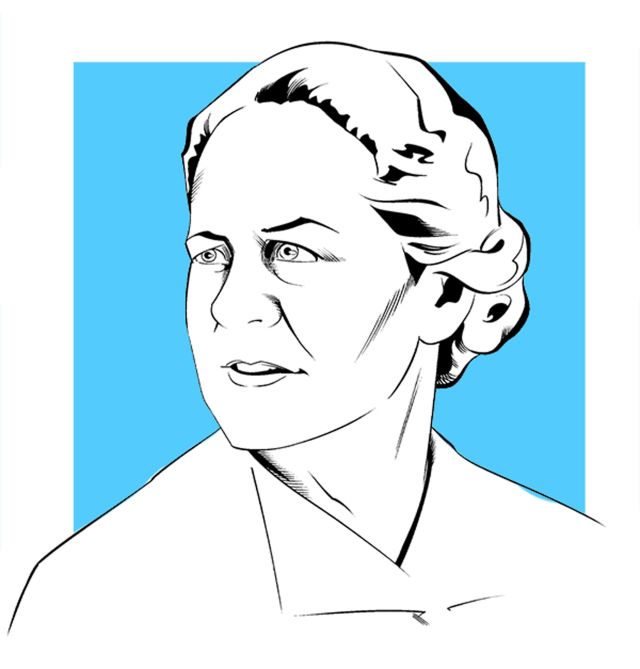
Jane Bancroft Cook
Image: Rob Jones
She came here in the 1950s, drawn by all the things people are still drawn by—golf, swimming and spring training. She built a big but not particularly good-looking house on Hillview Avenue (now the site of the Grain mansion) and lived a very quiet life, not at all like her much more outgoing sister Jessie, who died during dinner at the 21 Club in New York City. She was ranting about the Red Sox.
The girls were the owners of Dow Jones and The Wall Street Journal. Their stepfather, Clarence Barron, bought the companies in 1902 from the founders and left the sisters in control when he died in 1928. Yes, there were several other relatives involved, but the sisters had the lion’s share.
They were billionaires back when billionaires were practically unheard of. Jane served on the board of the company until 1985; she paid close attention to her dividend checks, but the business was run by professionals, not family members. The company was finally sold to Rupert Murdoch in 2007 in one of the great dramas of American journalism: the patrician family business selling out to the philistines.
Mrs. Cook, as she was always referred to, was a ghostly presence during her last years in Sarasota. Yet she threw her weight behind the then-tiny Women’s Resource Center (her father wouldn’t let her go to college, and this fact is reflected in her causes).
Her biggest undertaking was New College. She was part of the core of local visionaries who put it together back in the late 1950s. There were Philip Hiss, David Lindsey, George Baughman, to name several of the most prominent. But it was Mrs. Cook’s vast fortune that gave the project financial viability. The college rewarded her by naming its library after her. (There’s also Cook Theatre at the Asolo. It’s the smaller one, where they do the student and experimental work—a nice fit of donor and project.)
Jane Cook died in 2002. She was hardly a famous person, but such was her importance in the world of finance that the announcement was delayed until the New York Stock Exchange had closed for the day. It was feared that the news would roil the markets.
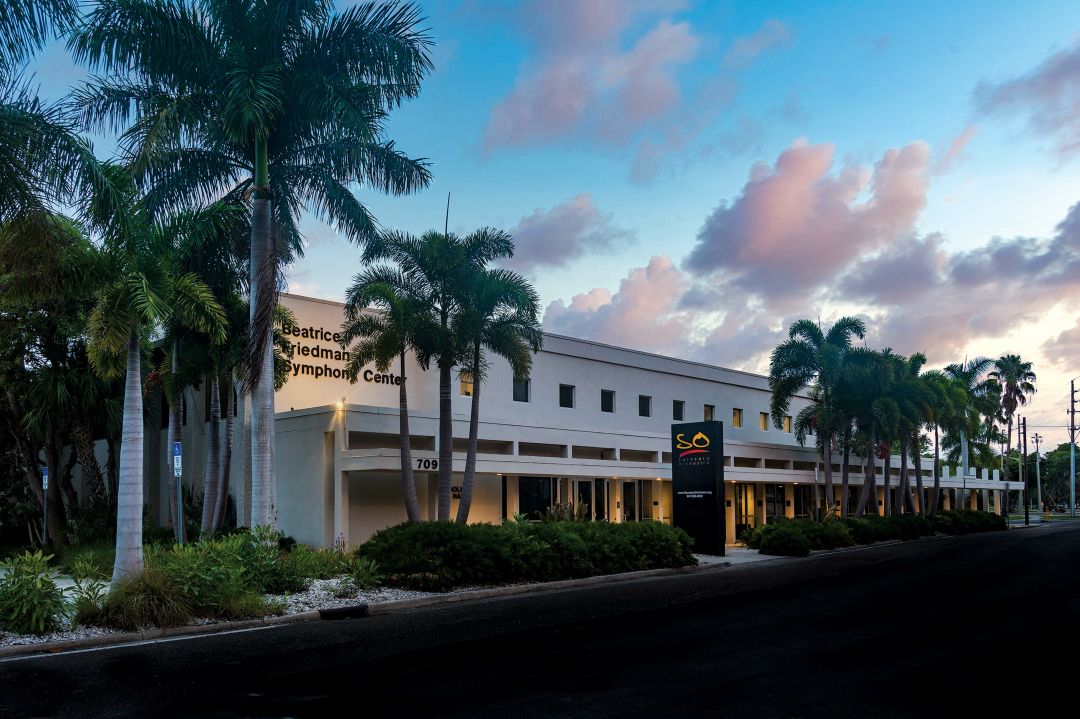
A donor to many nonprofits, Bea Friedman's true passion was the Sarasota Orchestra.
Image: David Tejada
Bea Friedman
Bea Friedman was the kind of benefactor that any arts organization would kill for. Arts administrators would do well to study her career. She truly loved her chosen art form (in this case, classical music), she was smart and tireless, she would push things along but not meddle. She never made a misstep.
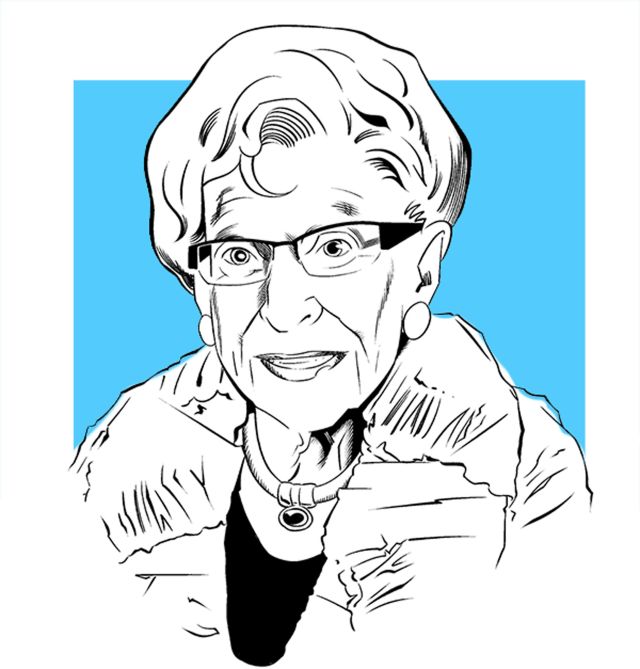
Bea Friedman
Image: Rob Jones
Bea was born in Brooklyn, a tiny woman not quite five feet tall. She and her husband, Allen, built a very successful business together, manufacturing photo typesetters. They were based in Chicago but would come down to vacation at the Colony on Longboat Key. One night they decided to go see something called the Florida West Coast Symphony. It was a performance that changed their lives.
But not right away. Allen died of a heart attack in 1975, and Bea sold the company and moved here. She began volunteering with the symphony and was soon on the board. She helped guide the group through a name change and three decades of solid growth. It’s now the Sarasota Orchestra and one of the most impressive orchestras in the country for a mid-size city. In 1998 the symphony building, the Beatrice Friedman Symphony Center, was named after her.
Bea was a kind and sweet person—except when she was fund raising. “You’re not giving enough,” she would tell friends.
“She was not a gentle soul,” says Anne Folsom Smith, who was both her decorator and board president. It was Anne who decorated Bea’s two penthouses, the first at L’Ambiance on Longboat and the later and final one at Beau Ciel.
Bea’s entertaining was famous. She would have André Watts play in her living room and then sign her piano. Yo-Yo Ma would come for lunch. To this day, people still talk about the food. It was always great and there was usually way too much. Bea entertained so much that one of her closest friends became Phil Mancini, the Michael’s On East caterer.
You’ll see Bea’s name on many places other than the orchestra. In fact, she donated the secondary rooms of so many buildings that she’s known as the Queen of the Lobbies.
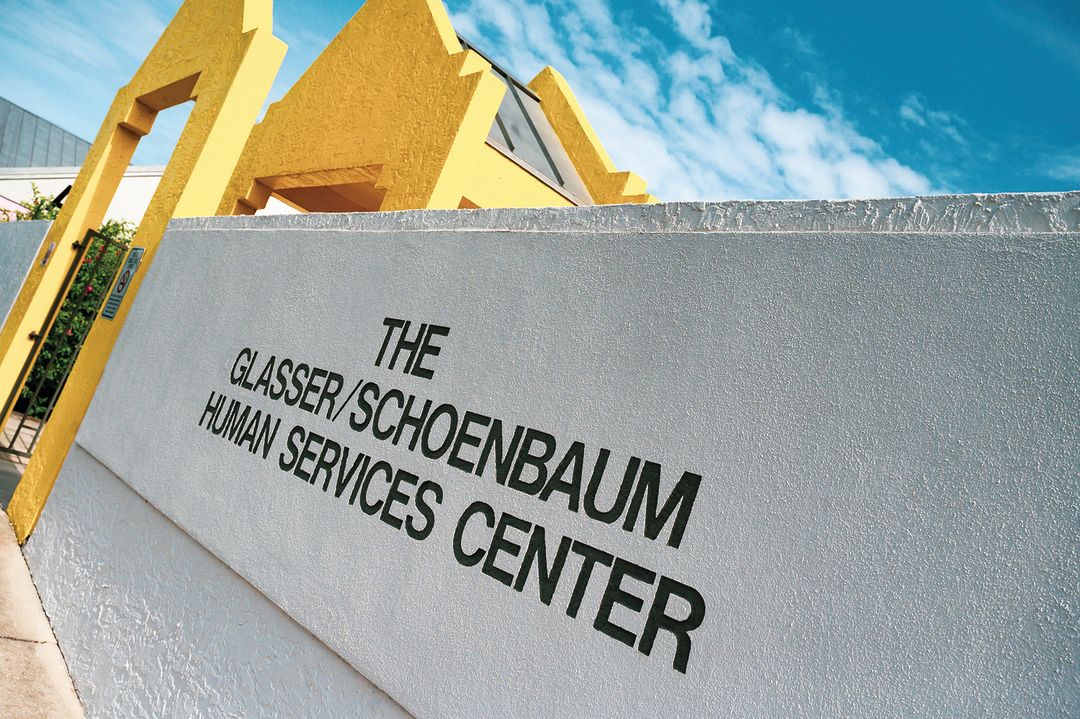
Betty Schoenbaum made giving away her millions a joyful celebration.
Image: David Tejada
Betty Schoenbaum
Bea had a little of her thunder stolen when Betty Schoenbaum showed up. Betty was the happiest old lady imaginable. She had time for everyone, and after a conversation she would give you a big hug. She felt hugs had a therapeutic benefit and would cite medical evidence.
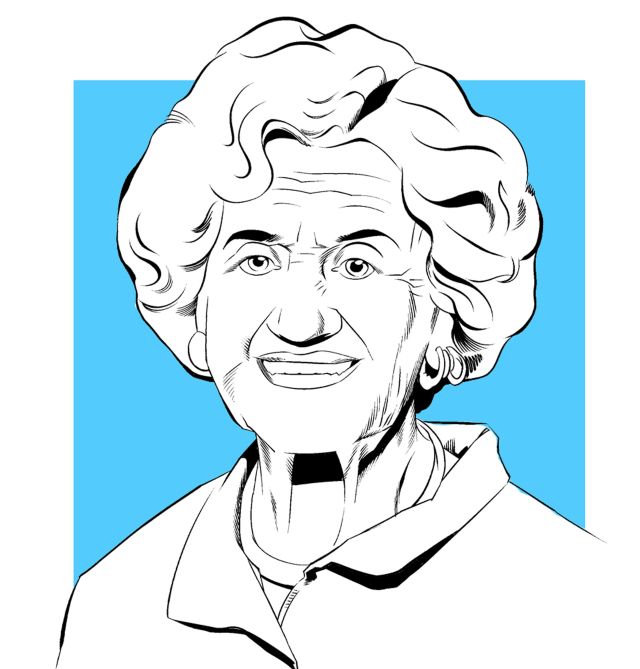
Betty Schoenbaum
Image: Rob Jones
Betty was the widow of Alex Schoenbaum, the Ohio State football hero and the founder of the Shoney’s restaurant and motel chain. At one point there were more than 2,000 of them spread throughout 36 states. Betty claimed no part of the company’s success. She was home raising the four children (her youngest daughter, Emily, was born when she was 49).
Betty grew up in Dayton, Ohio, and had serious dreams of becoming a dancer. She became proficient in tap and ballet but was just too tall to fit into a chorus line. She met Alex at a frat party and they married right out of college. He is remembered as a tough businessman who sometimes got in public spats with his employees. When the couple started giving away big money, like $31 million to the Salvation Army, it was Alex who was calling the shots.
Then Alex died in 1996. Betty took some time to pull herself together, but in a year or so she was back. And she was different. “I became my own person,” she said. Now the decisions were going to be her decisions, and she was ready for the task. Slowly but surely, she turned herself into a philanthropy star.
She looked the part. With her height and her colorful clothes, she was instantly recognizable at any event. A latent talent for public speaking appeared, and she sensed the power she had over audiences. Her remarks about the importance of giving were always delivered extemporaneously and often drew standing ovations.
Unlike many of the town’s grande dames, Betty was comfortable with the attention. In fact, she thrived on it and used it to get attention directed at the things she loved. The TV station used to send a crew over to her penthouse in Sarabande whenever there was a big Ohio State game. They’d get footage of Betty dressed in all her Ohio State regalia, waving a pom-pom and cheering the team.
Betty’s masterpiece is the Glasser/Schoenbaum Human Services Center on 17th Street. Originally founded with her husband and Kay Glasser, a remarkable woman who deserves her own article, Betty became passionate about its purpose and helped it thrive. It’s like a mall with social services such as Healthy Start, First Step and the Suncoast Partnership to End Homelessness.
The Schoenbaum money was substantial, and Betty had declared the intention of giving it all away before she died because it was so exciting to see the results. “The joy of giving is the joy of living,” she said at every event and interview. Her projects spread all over the country, particularly to Charleston, West Virginia, which she considered her hometown. Then it was on to Israel, and her most exciting project of all. She helped pay for the return to the promised land of one of the lost tribes from Ethiopia. It amazed her that her philanthropy had brought her this close to the very Bible.
Everybody loved Betty. Everybody loved Bea. But everybody didn't love Ulla.
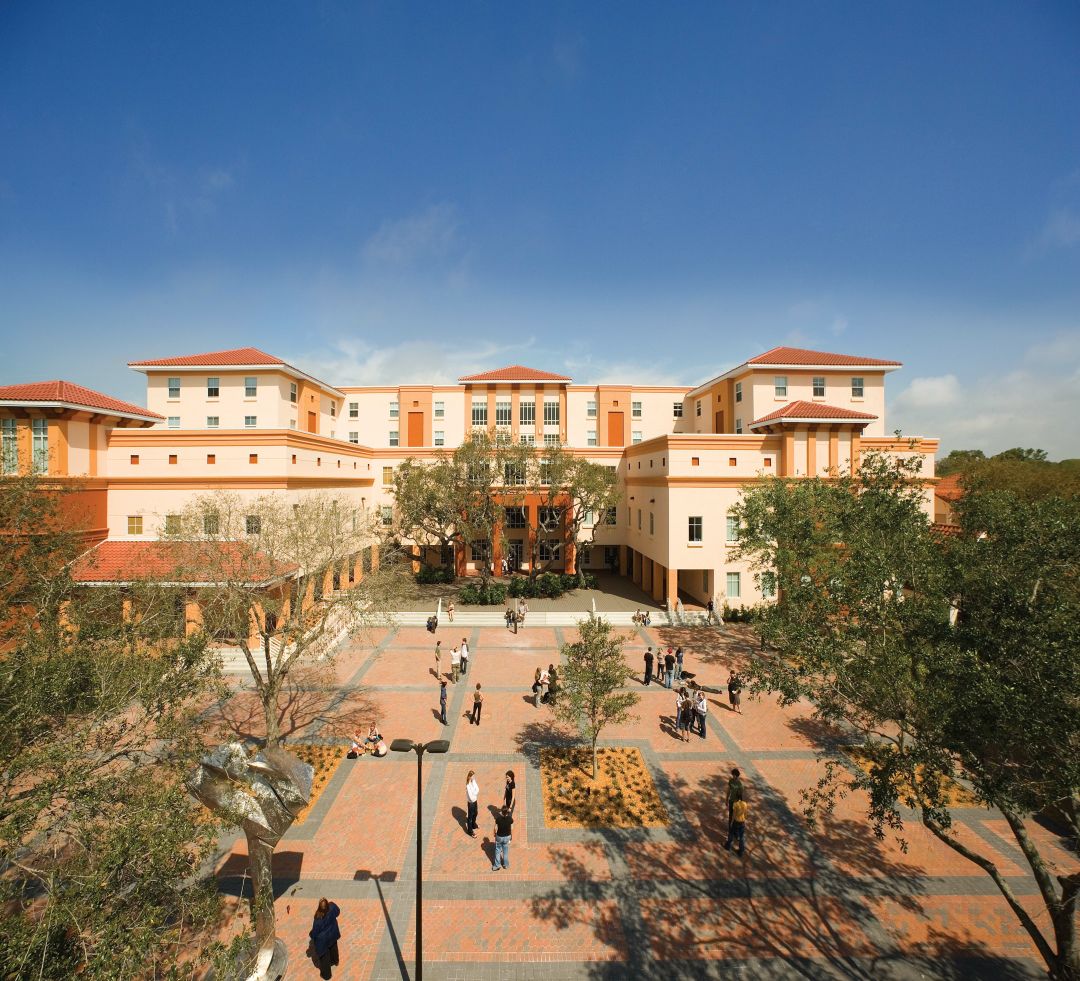
The Ringling Museum's Searing Wing
Image: Greg Wilson
Ulla Searing
Ulla Searing was the drama queen of the old lady set. Ulla and her antics have been discussed over the years to the point where they have become urban legends in the Sarasota arts world. Did she really try and get somebody at the Asolo fired because the young woman flirted with her escort? Did she really make a certain symphony conductor cut her salad at a gala?
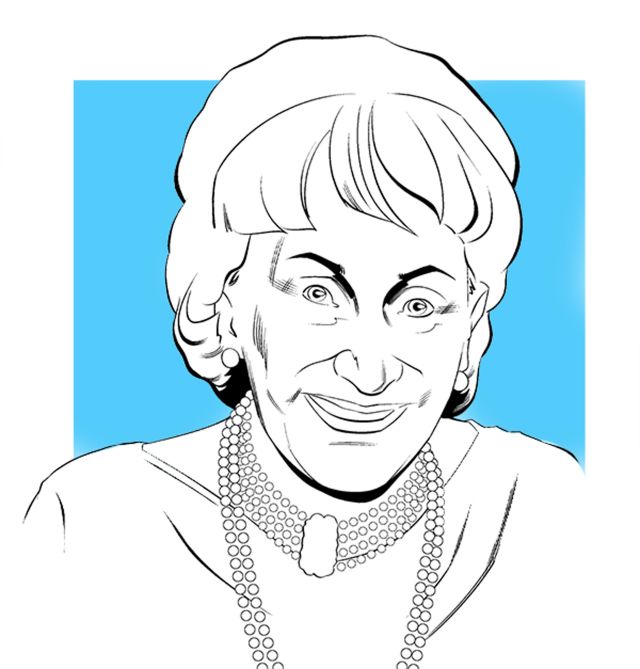
Ulla Searing
Image: Rob Jones
Even in her late 90s, Ulla still had a touch of the glamor girl, a whiff of sex. Her life had everything. She was born out of wedlock in Sweden and raised by an aristocratic family. But her mother refused to acknowledge her, which friends thought left a lasting scar. After World War II, she emigrated to the U.S. and became a career girl in New York.
That’s where she met a rich financier named Arthur Searing and became his second wife.
There ensued a very pleasant life, part Sarasota, part Southampton. Arthur died in 1983, and Ulla, with no children, began giving away the money. And there was a lot to give away. The Ringling Museum got $9 million, Ringling College $4 million, the Asolo $3 million, the Sarasota Ballet $2 million…
This largesse made her the most popular girl in town, and it was a part she liked to play. She loved getting dressed up in her couturier wardrobe, usually in her signature yellow. She had the best jewelry collection in town, including an emerald necklace once owned by the Vanderbilts. She was famous for her oddly tilted eyes and always wearing white gloves. Every artistic director in town had to pay a great deal of attention to her, and I still have vivid memories of watching one of them wheel her down the aisle, get her settled into her front row seat, then push the empty wheelchair back up the aisle, against the crowd, sweating profusely.
Ulla had two more marriages after she moved to Sarasota. The first was very short, to a man she described as a “Dane with Alzheimer’s.” The second was to a man many old-timers still remember. He was a French-Canadian named Claude du Pont, certainly not a real du Pont, and was noticeably younger than Ulla. The whole town was wondering what was going on. And with good reason. Ulla later told the Observer newspaper that she finally had to flee incognito to the Colony with just a servant, fearing for her safety.
Many people were afraid of Ulla. I certainly was. She was an imperious woman, hard to make conversation with, frowning on what she considered “incorrect” behavior. I wish I had gotten to know her better, as her philanthropic projects showed real imagination and taste. She knew what she was doing. The Searing Wing at the Ringling is a great success and has opened all sorts of new possibilities for the museum. And the gift of a million-dollar circus tent to The Circus Arts Conservatory has given us a new landmark. The grateful circus sent clowns to entertain her during her final illness, an odd but fitting end to what turned out to be a very dramatic life.
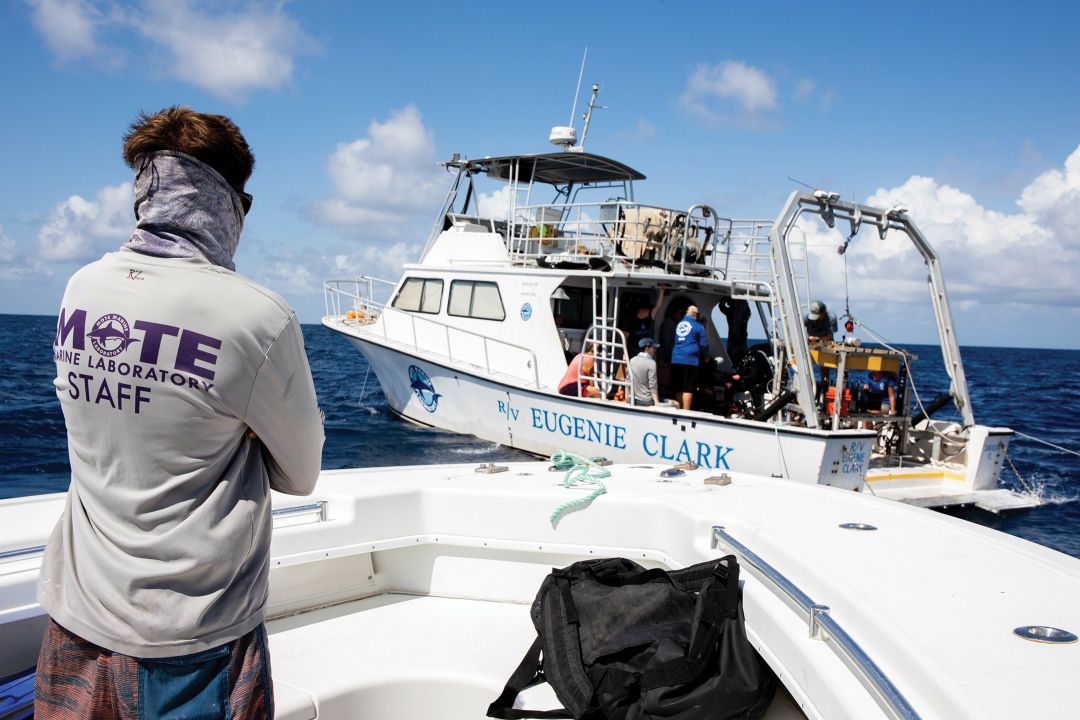
Marine biologist Eugenie Clark made Mote a world-renowned research facility.
Image: Kristin Paterakis
Eugenie Clark
In the world of naming buildings, the winner is usually the person with the money rather than the person with the creative vision. This is certainly true with Mote Marine Laboratory. Granted, the Motes are wonderful people and did a great job of funding a major scientific center. But the soul of the place belongs to Eugenie Clark.

Eugenie Clark
Image: Rob Jones
She was an explorer in the old-fashioned sense. She set out for unknown territories, places full of danger, then came back and told us of their wonders. Her territory was the sea, and more particularly the fish who live in it. She was both a great scientist, with a list of accomplishments that went on for 20 pages, and also a popular personality who wrote best sellers and appeared on TV.
Her specialty couldn’t have been more exciting—or better timed. She was the Shark Lady. After the movie Jaws came out, the world was fascinated with sharks, and she was the authority on the subject. Among her many discoveries: Sharks can be trained, and they really do sleep. Eugenie was from New York City, and traces of it lingered in her voice for the rest of her life. Every Saturday morning her Japanese-born mother would take her to the aquarium in Battery Park, and that’s where her passion for the depths of the ocean came to life. After college (Hunter) and graduate school (NYU) she learned how to scuba dive, and that became her specialty. She turned scientific research into an adventure.
Eugenie’s first lab was a one-room shack in Placida, paid for by the Vanderbilt family, who had a winter place on Manasota Key. They were fans of her first book, Lady with a Spear. The lab moved to Siesta Key and finally City Island. She oversaw its growth and its projects around the world, but for all her accomplishments she was also a mother with four kids and quite a few husbands—five, to be exact. The children had an unusual childhood, going off to places like the Persian Gulf for adventures. Several have species of fish named after them.
As for Mote, it’s become a world-renowned research facility, and its Sarasota campus has become one of the town’s major tourist attractions. Plans are underway for an even larger facility at Nathan Benderson Park with more exhibits and educational programs. I’m sure some major portion of it will be named after Dr. Clark.
At the moment, they have a 47-foot research vessel named after her, and it was from the deck of the R/V Eugenie Clark that her ashes were released to the Gulf, a ceremony that, given her life and work, had never seemed more appropriate. She was the perfect Sarasotan, a scientific romantic, tireless, so taken with the beauty and importance of our natural surroundings that she made them her life’s work. There have been books written about her. Perhaps the most important are the children’s books. As an inspiration for young girls interested in science, she had no equal.

A pioneering educator, Emma E. Booker fought to create Sarasota's Booker schools.
Image: David Tejada
Emma E. Booker
Everyone in Sarasota knows the name Emma Booker. There are three schools named after her: Emma E. Booker Elementary, Booker Middle School and Booker High School. She’s remembered as a pioneering Black educator, a figure from the distant past. Now, with the country taking a good hard look at racism, her story becomes more relevant than ever.
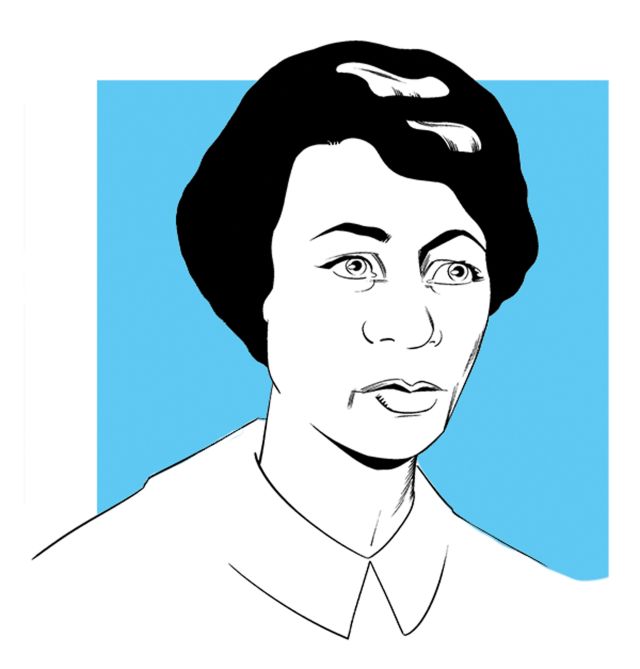
Emma E. Booker
Image: Rob Jones
She was a tall, dignified woman from Long Oak, Florida, who started teaching school when she was still a teenager. The educational system for Black children was segregated and haphazard. It was seriously underfunded, with the teachers forced to scramble for used books, discards from white schools. The students often sat at desks made from orange crates.
But during the years 1914 to 1930, Emma Booker managed to put together an educational system that worked for the Black community. Inch by inch she would keep moving forward, getting a little more money from the school board, getting a new schoolhouse courtesy of Julius Rosenwald, the CEO of Sears, Roebuck and Company. But it was always a struggle. When she tried to get a ninth grade added in 1923, the superintendent told her, “An eighth-grade education is enough for any Negro.”
To Emma, education was the highest good, and many of her students went on to become teachers. Buck O’Neil, the famous baseball player of the Negro League, was one of her students and often praised her influence on him and the other students. “She just might have been the most important woman in Sarasota,” he remembered. Emma’s own greatest ambition was to graduate from college. She finally did so at age 53. Her highest salary during her teaching career was $60 a month.
If only Emma could have seen into the future. Of all the remarkable women in Sarasota’s history, her name may well be the most famous. It was in a classroom at Emma E. Booker Elementary on Sept. 11, 2001, that President George W. Bush was listening to a group of students, mostly Black, along with their Black teacher and Black principal, show off their reading skills. In the middle of the lesson, he was told that a second plane had crashed into the World Trade Center. In that moment. Emma became a footnote to world history, a footnote all the more important for what it says about the long, wide sweep of American life.